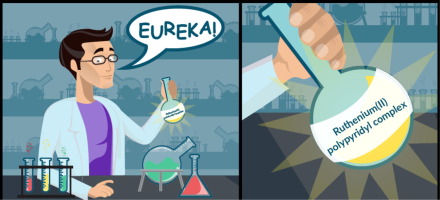Biological applications of Ru(II) polypyridyl complexes
Mariusz Mital, Zyta Ziora
Index: 10.1016/j.ccr.2018.02.013
Full Text: HTML
Abstract

Ru(II) polypyridyl complexes are of great interest for their unique biological, photophysical, optical, catalytic and electronic properties. This class of complexes demonstrates a number of potential therapeutic applications via interactions with DNA, enzymes and cell membranes, leading to cell death. Metal-based drugs have many common mechanisms of action when acting against cancer and bacterial cells. Even though it was discovered over 50 years ago, the best-known anticancer agent is still cisplatin and the high toxicity and potentially serious complications point to the need for improved drug treatments. Similarly, the first antibiotics introduced in the 1930s against bacterial infection started “the golden age of antibiotics”, but the increased number of antibiotic-resistant bacteria has become a global health problem. Recent research has shown that Ru(II) polypyridyl complexes have the potential to be used for the treatment of both cancer and bacterial infections, and in this review the most promising complexes are presented with their anticancer and antimicrobial properties discussed in detail.
|
Tridentate pyridine–pyrrolide chelate ligands: An under-appr...
2018-03-28 [10.1016/j.ccr.2018.01.012] |
|
Recent advances about metal–organic frameworks in the remova...
2018-03-19 [10.1016/j.ccr.2018.03.015] |
|
Recent advances in ultraviolet and deep-ultraviolet second-o...
2018-03-15 [10.1016/j.ccr.2018.02.017] |
|
Molecular and supramolecular chemistry of mono- and di-selen...
2018-03-15 [10.1016/j.ccr.2018.03.001] |
|
Luminescent oligonuclear metal complexes and the use in orga...
2018-03-13 [10.1016/j.ccr.2018.01.017] |